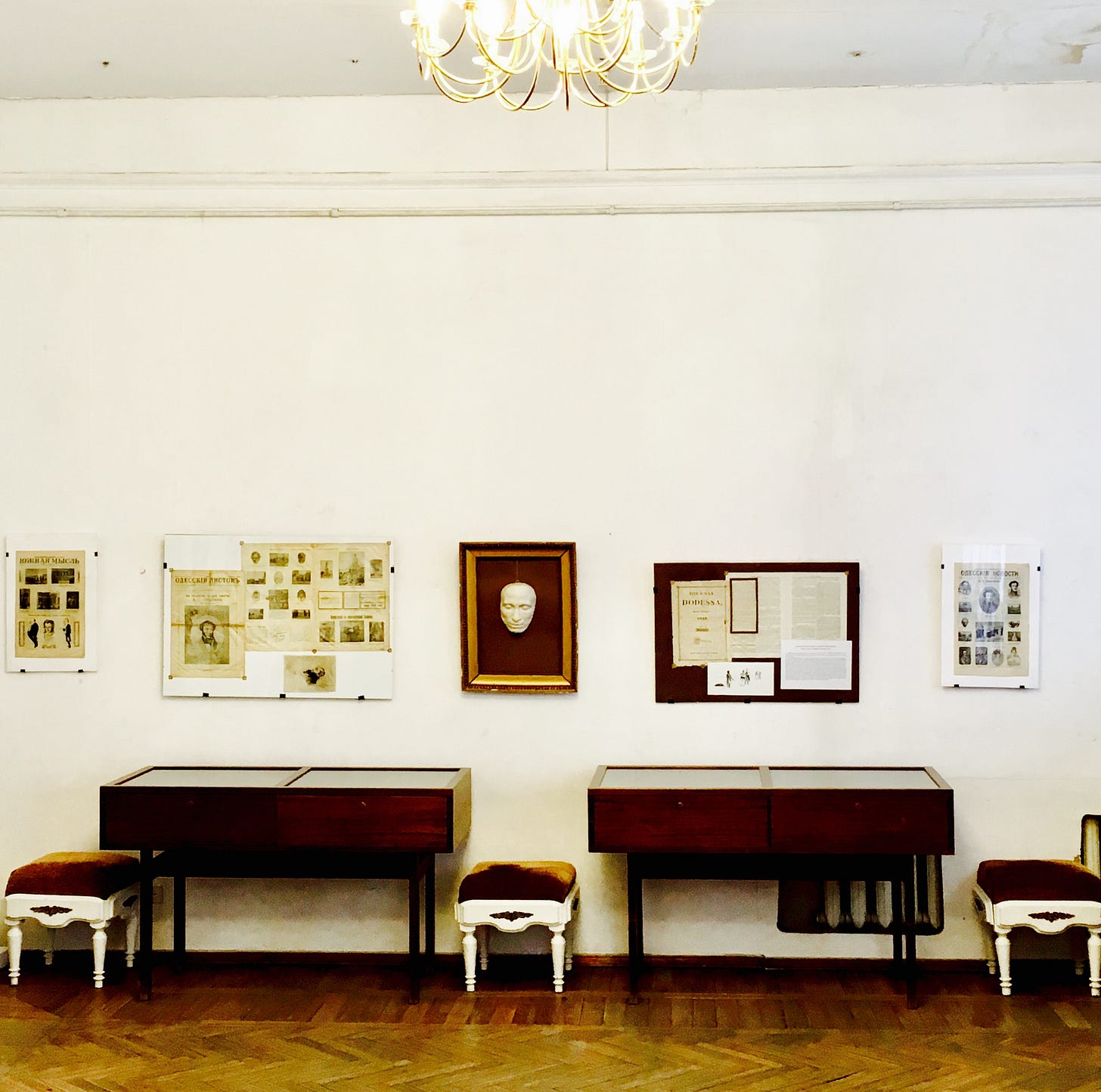A slightly unusual dispatch this week prompted by the View Finder I sent out on Monday featuring the monumental iron fountain in Armenia’s second city, Gyumri. I’d like to stay nearby for this essay and to explore a weirdly enticing museum located downtown.
~
The first death mask I remember seeing was of Alexander Pushkin at the museum dedicated to him in Odesa, Ukraine.
Set on maroon fabric and held in a gold frame under glass, the alabaster whiteness of the death mask was mysterious and morbidly alluring. Stripped of his curly hair, all colour and his famous sideburns, it didn’t really resemble Pushkin, I remember thinking, if anything the wan face looked more like Putin (even more disconcerting).
It wasn’t until, years later, I went through the sombre rooms of Sergey Merkurov’s house museum in Gyumri, in northwestern Armenia, that I thought about the practice and popularity of death masks in the former Soviet Union (though the roots of this art go way back further in time to ancient Egypt, and to the Romans who produced such masks using wax.)
A sculptor known for his monumental statues of Soviet-era leaders, there are many curious and fascinating things to know about Merkurov (1881-1952). Of Greek-Armenian descent, he was the sculptor responsible for three of the biggest monuments of Joseph Stalin and was also the cousin of the peculiar spiritual teacher and philosopher George Gurdjieff, who, like Merkurov, was also born in Gyumri.
Gyumri has long been known for its craftspeople: silversmiths, blacksmiths, tailors, embroiderers, shoemakers, carpet weavers, watchmakers and copper workers.
Sergey Merkurov was one of the most talented, and certainly best known, of Gyumri’s craftsmen and this singular museum tells us not only about his life - and his macabre masks of Soviet leaders, poets and writers - but leads us also to bizarre modern-day controversies...




